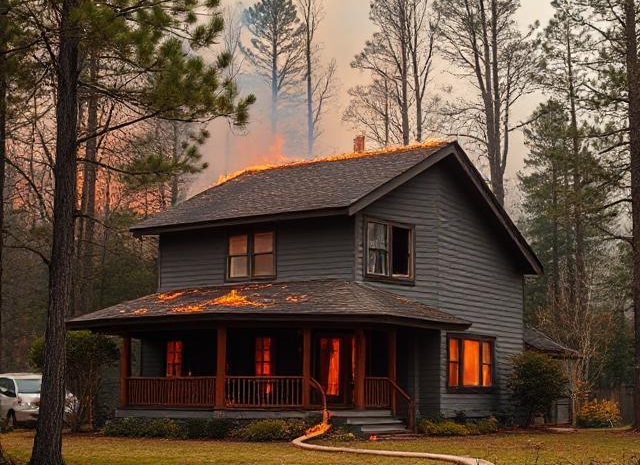
Does Home Insurance Cover Wildfire Damage?
Yes, homeowners insurance typically covers wildfire damage, but there are important details to consider about the scope of this coverage:
1. Dwelling Coverage
- Wildfire damage to the structure of your home, including the roof, walls, and foundation, is usually covered under the dwelling coverage section of your homeowners insurance policy. This means if a wildfire causes the home to burn down or suffer significant damage, your insurance will generally cover the cost to rebuild or repair the structure.
2. Personal Property Coverage
- Personal belongings such as furniture, electronics, clothing, and other household items are also typically covered by your homeowners policy if they are damaged or destroyed by a wildfire. Your insurance will pay to replace these items, up to the coverage limits specified in your policy.
3. Additional Living Expenses (ALE)
- If your home becomes uninhabitable due to wildfire damage, Additional Living Expenses (ALE) coverage will help pay for the cost of temporary housing, food, and other living expenses while your home is being repaired or rebuilt. This is included in most standard homeowners insurance policies, but the limits and terms can vary.
4. Policy Limitations and Exclusions
- Fire Coverage Limits: While wildfire damage is typically covered, there are coverage limits on how much your insurer will pay out. It’s important to ensure that the replacement cost of your home and possessions is fully covered by your policy, especially if you live in a high-risk area.
- Exclusions: Some policies may have exclusions or endorsements (specific limitations) when it comes to wildfires, particularly if you live in an area that is classified as high-risk for wildfires. In certain cases, insurers may limit the coverage for homes in wildfire-prone zones or may raise premiums to reflect the added risk.
- Wildfire Prevention Measures: Insurance companies may offer discounts for homes that have wildfire mitigation measures in place, such as defensible space around the property, fire-resistant roofing, or fire breaks. It’s a good idea to check with your insurer about the availability of such discounts.
5. Wildfire Insurance Riders or Endorsements
- If you live in a region that is especially vulnerable to wildfires, you might want to look into adding a wildfire-specific rider or endorsement to your policy. These endorsements can provide extra coverage to protect against certain wildfire-related risks not fully covered by your standard homeowners policy.
6. Living in High-Risk Wildfire Zones
- Higher premiums: If you live in a high-risk area, your insurer might charge higher premiums to reflect the increased likelihood of wildfire damage.
- Availability of Coverage: In extreme cases where wildfire risk is particularly high, some insurance companies may not offer standard coverage or may have more restrictive terms. In this case, you may need to look into high-risk insurance providers or policies specifically designed for wildfire-prone regions.

